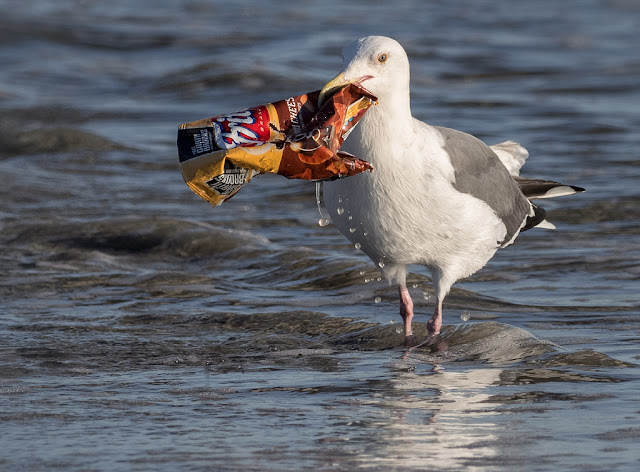On Monday 17th December with the temperature around 12 degrees. John and I decided to stay local and visit our usual places and our first stop was in the Salinas opposite the turning for Playa Lisa. The water level on the non-saline side was high and there was nothing of note on it. On the Salinas side were the usual collection of Gulls with two Lesser Black Backed amongst them.
At the Salt Tower a Spoonbill flew towards us, and around, before settling behind the nearest bank. In the far distance there were 35+_others with a group of four easily visible. A Redshank called and flew over. Flamingos had good numbers. The pools opposite the lay-by did contain water, but no birds. A winter plumage Black Headed Gull perched close by.
At the next pull-in we could easily see more Spoonbills. Little Egrets were numerous and we saw four Great Egrets and over the reeds two Marsh Harriers hunted. A pair of Stonechats were obvious. We carried on to El Pinet and it was disappointing. Against the far bank were a good number of Black Tailed Godwits. We quickly went to the beach in search of wintering seabirds, but all that we saw were Auduoin’s Gulls and Meadow Pipits searched and flew around in the dunes. An Iberian Green Woodpecker called from the pines.
Next we visited the mouth of the Rio Segura. Dartford Warblers called and flew. There were rafts of Gulls with both Black Headed and Mediterranean in very good numbers. Slender Bills were further up the river. Disappointing in some respects with no Kingfishers and nothing more except a lone Jay flew into the pines.
Apart from the flying Spoonbill which was a very good sighting our morning was not exceptional.
We now headed in the general direction of Santa Águeda and on the way we had a flying male Marsh Harrier and our first Booted Eagle of the day. There were plenty of small birds around and then we got lucky.
We came up to a flooded field that resembled a lagoon. 75 Glossy Ibis and 50 Cattle Egrets fed. That was a great sight and flying in and around were numerous White Wagtails and raucous Jackdaws called from the side. Glossy Ibis fed close to us and so did several Black Winged Stilts.
In the corner of the field small birds hopped about and flew in and out of cover. We had to be patient and it was not until our return on passing this field that we had outstanding views of three Water Pipits.
A female Black Redstart perched in front of the car. They are beautiful birds. We also added Chaffinches and Greenfinches to our sightings.
There is now water at Santa Águeda with the scrubby area having pools in it. We paid attention to it and there close by was a solitary Temminck’s Stint sharing the mud with a Blue Throat with others of it’s kind flying in an out of the bushes.
We will never be satisfied, but our opinion of 2018 was we've seen some tremendous birds and also some great company plenty laughs and banter, we've been fortunate to have seen lots of birds, and few photos to go, how lucky are we. A great hobby and out in the field enjoying ourselves. Today the sun shone from a clear sky and there was only a light wind and hopefully we will get many more of them in 2019.
cheers Bryan ThomasThomas
thanks so much for taking the time to look
Merry Christmas to all

























































